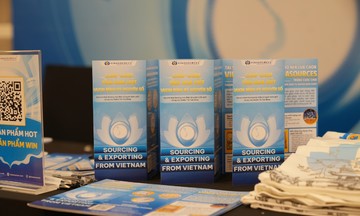This plan is based on a projected export value of $31.6 billion for the last six months of the year, a 4.8% decrease compared to the same period last year. This represents an estimated $1.6 billion loss if current tariffs remain. Meanwhile, during the first six months of the year, export value reached an estimated $33.5 billion and import value reached $23.5 billion, increasing by 14.3% and 23.5% respectively compared to the same period last year.
The ministry has set a roadmap for export revenue: over $17 billion in Quarter II, $14-$15 billion or more in Quarter III, and over $16 billion in Quarter IV.
 |
Farmers in Nga Nam Town (Soc Trang) harvest winter-spring rice. Photo taken on 10/3/2020. Photo: Nguyet Nhi |
To achieve this goal, the ministry has called for maximizing tariff exemptions, balancing the trade deficit with the US market, capitalizing on short-term export opportunities in Quarter II and early Quarter III, and maximizing export value in the final six months of the year.
Wood and wood products face the most significant pressure from US tariffs due to their large market share (67% of total export value). The 2025 export target is estimated at $18.5 billion, a 7% increase compared to the same period in 2024 (with $8.4 billion targeted in the first six months and $10.1 billion in the latter half).
The Ministry of Agriculture and Rural Development recommends that businesses continue to identify and maintain suitable product lines for export to the US. To reduce the trade deficit, they should increase purchases of logs, lumber, and wood materials from the US.
Simultaneously, they should expand export markets to Europe, Japan, Australia, Canada, and the Middle East, which are potential markets with an increasing number of resort projects, to offset the decline in the primary market. Businesses should also actively participate in international trade fairs to directly promote their products in these markets.
Seafood is the second most affected sector by US tariffs. The 2025 export target is an estimated $10.5 billion, a 4.3% increase compared to 2024, with $5.4 billion targeted for the last six months.
The ministry assesses that tariffs significantly impact the seafood industry, especially in comparison to India, Thailand, Indonesia, and Ecuador. Consumer demand has also declined, particularly for shrimp and salmon, in the early months of 2025.
Accordingly, the Ministry of Agriculture and Rural Development suggests increasing the market share of pangasius and maintaining and promoting fresh seafood in the Chinese market.
In addition, to reach the $65 billion export target, the ministry has also proposed solutions to boost exports of other products like coffee, pepper, cashews, tea, and rubber.
Gia Chinh












